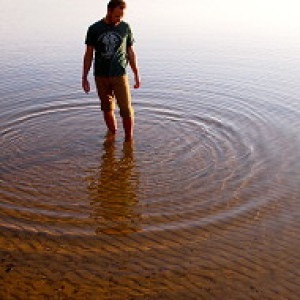Ingapirca
Today we took a field trip to the ancient Canari ruins of Ingapirca about two hours north. The Canari were the people that dominated the highlands of Southern Ecuador before the Inca arrived sometime around the 12th century. The Inca Empire like most subjugated other peoples as vassal states. Brokering regional autonomy in exchange for tribute and such it was for the Canari. The Canari resisted the Inca though and rose against them, only to be brutally crushed by Huanya Capac Inca shortly before the Spanish invasion. One lake near.
Quito is named Yawar Kocha, meaning lake of blood in Kichwa so many bodies were thrown into it. Dispel any of those noble utopian fantasies you had of the Inca. They were brutal conquerors and regularly slaved and sacrificed their captors. The Inca practiced a system of divide and conquer manipulating regional factions and often moving more rebellious peoples hundreds or even thousands of miles away to more stable parts of the empire, say in Cuzco. Meanwhile loyal Inca families serving as a nucleus of sorts were likewise moved into hostile regions to exert regional power. Some of the Canari were moved to Peru to be integrated. Likewise, there were people from other places like Bolivia moved hundreds of miles north to places like Saraguaro in the South near Loja. To this day the people there maintain distinctive dress and customs differentiating them from the surrounding area. Soon after the second subjugation of the Canari, the conquerors became the conquered this time by the Spanish who used the Canari to practice their own tactics of divide and conquer on an Inca empire already disintegrating from civil strife. More ruthless even than the Inca, the Spanish of course looted and plundered the wealth of the Americas scrupulously shaping life here as we know it today. Still though, the descendents of the Incas and other peoples live on but in a different culture and reality than their own. Here in the Andes, like so many other parts of the globe post colonialism in a not yet post colonial world.
The ruins themselves are impressive and blend elements of both Canari and Inca architecture differentiated by subtleties like the type of stones used and geometric layout. Like most Inca ruins though many of the original stones were long since hauled away by colonists and local people to serve as foundation for churches and homes. All that remain today are the remains, still they are worth a visit and we enjoyed the history lesson walking the trails into the fields below and indulging in a picnic of peanut butter and jelly sandwiches, fresh fruit, and platanos. On the bumpy bus ride back we pass little towns centered around old church plazas where bright dressed Kichwa woman walk past with their babies bundled up on their backs and old men sit gazing out from rockers in the still of the afternoon. Through patchworks of green and brown fields in the valleys of the cordillera below and around occasional narrow ledges around rockslides that make your heart jump a little. For dinner we treated ourselves at a local Colombian restaurant Coral recommended munching on arepas, thick tortillas under mounds of beans, cheese, fried pork, and plantain, whatever you fancy. Grabbing a beer at a local brewery with the students before walking home and closing the curtains on this day?
- 1
- 0
- Olympus E-P1
- f/10.0
- 39mm
- 200

Comments
Sign in or get an account to comment.


